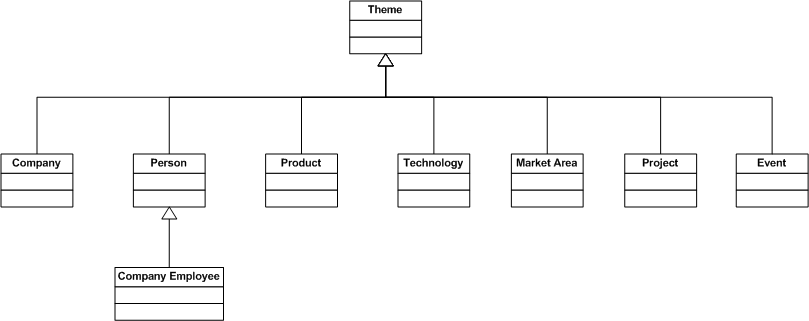The types of subject for a site determine how the content of the site will be classified. You can think of the subject types as the different routes into the site content. Your job in the analysis phase is to determine what are the main types of subject that your site content is about. You can do this either by analyzing site content that already exists (a bottom-up analysis) or by analysis of the domain that the site content will cover when it is created (a top-down analysis). From this you should be able to determine the principal types of site subject.
For a bottom-up analysis, read through as much representative site content as you can. From that write down what you feel are the main subjects discussed in each content item. Having done this, you can start to group those subjects by the type of thing that they are.
For a top-down analysis you should already have a plan for the site that describes the overall topic of the site. From this you could examine other sites covering the same domain to see how they break it down into the principal subjects; or you could perform some other business analysis to determine the site subjects.
The types you create for subjects will determine how you can relate one subject to another and also how you can connect a subject to additional information. You can organise your subject types into a type hierarchy which allows for a more specific type to inherit certain properties from the more general type. Subject type hierarchies can also be useful for browsing and searching operations as they allow a user to quickly set a scope for their search.
Company Intranet Subject Types
Our site is to be used to organise information about the products and projects that a software company works on. As well as the products and projects, our intranet will also present information about people both internal and external and the companies that they work for. We also want to group together documents and projects according to the technology they describe or use and according to the market sector that they relate to. Finally we also want to be able to talk about events that people might participate in - e.g. conferences they attend. This leads to the following list of subject types.
| • | Company |
| • | Event |
| • | Market Area |
| • | Person |
| • | Product |
| • | Project |
| • | Technology |
In addition we decide that there is a distinction to be made between people who work for the company that owns the intranet and people who work for other companies. For example only an employee would have an internal phone extension number or a desk location property, and we could infer that an employee works for the company that owns the intranet without it having to be explicitly stored in the topic map. So we create a subclass of Person to represent an Company Employee (meaning an employee of the company owning the intranet).
Finally we decide that all of these subject types share one thing in common - they can all be the subject of one or more pieces of content on the intranet. To represent this we decide to create a single more general type of Theme, meaning the theme (or potential theme) of some piece of content. This leads us to the following class hierarchy (represented here in UML notation).

Subject Types for the Company Intranet in UML Notation